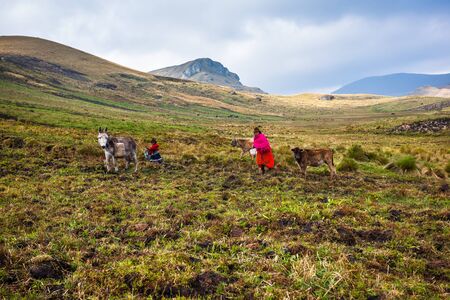Introduction: The Need for Inclusive Outdoor Adventures
The Scottish Highlands are renowned for their breathtaking landscapes, rugged hills, and tranquil lochs. For many, these wild spaces represent the very best of Britain’s natural heritage, offering opportunities for adventure and peaceful reflection alike. However, not everyone has the same access to these beautiful places. Wheelchair-friendly walks and accessible picnic areas are often limited, making it difficult for people with mobility needs to fully enjoy what the Highlands have to offer. Ensuring that outdoor spaces are inclusive is not just about compliance or ticking a box; it is about social inclusion, well-being, and equal opportunity. When we create environments where everyone can participate—whether it’s a gentle riverside path or a thoughtfully placed picnic table—we foster a sense of community and belonging. Access to nature has well-documented benefits for mental and physical health, reducing isolation and boosting happiness. By improving accessibility in the Scottish Highlands, we open the door for more individuals and families to share in the joy of Scotland’s great outdoors.
Top Wheelchair-Friendly Walks in the Highlands
Exploring the Scottish Highlands should be an experience open to all, and fortunately, more of its breathtaking landscapes are becoming accessible to wheelchair users. Below, I’ve highlighted some of the most scenic and well-maintained paths that cater to varying accessibility needs. Each route includes essential details such as gradients, path surfaces, and unique accessibility features, helping visitors plan a comfortable and enjoyable outing.
Featured Accessible Highland Walks
| Location | Path Length | Gradient | Surface Type | Accessibility Features |
|---|---|---|---|---|
| Loch Morlich Circular Path | 3.5 miles (5.6 km) | Mainly level, gentle inclines | Compact gravel | Dedicated disabled parking, accessible toilets at visitor centre, frequent benches |
| Glenmore Forest Park Easy Access Trail | 1 mile (1.6 km) | Mostly flat | Tarmac & boardwalk sections | Smooth surfaces, wide gates, rest areas, accessible toilets nearby |
| Culloden Battlefield Trail | 0.75 mile (1.2 km) loop | Slight undulations | Tarmac path throughout | Accessible visitor centre, clear signage, wheelchair-friendly picnic benches |
| The Falls of Shin Riverside Walk | 0.5 mile (0.8 km) | Mild gradient in places | Packed gravel & boardwalks | Level access from car park, viewing platforms with ramped access, accessible café/toilets on site |
| Balmacara Woodland Trail (Easy Section) | 0.7 mile (1.1 km) | Mainly level with short slopes | Naturally compacted earth & stone dust mix | Kissing gates wide enough for wheelchairs, information boards at accessible height, seating points along trail |
Navigating Surfaces and Gradients: What to Expect
The majority of these featured trails offer firm, stable surfaces such as tarmac or compacted gravel that make for smooth rolling. Gradients are carefully considered; most walks remain largely level or feature only gentle inclines suitable for manual and powered wheelchairs alike. Where there are steeper sections or occasional uneven patches, these are clearly marked at the start of each trail and alternative routes or resting spots are provided where possible.
Accessibility Features That Make a Difference
Apart from physical access, facilities like disabled parking bays close to starting points, accessible toilets (often with RADAR key access), wide gates without tricky latches, and frequent seating areas are common across these Highland sites. Many visitor centres also provide up-to-date accessibility maps and staff trained to assist with specific requirements.
Planning Your Visit: Tips for Wheelchair Users and Companions
If you’re planning a visit to one of these trails, check local council websites or contact rangers ahead of time for the latest conditions—Scottish weather can alter surfaces quickly. Bringing a companion can be reassuring in rural areas with limited mobile signal. Finally, don’t forget your Blue Badge for parking where applicable.
The Scottish Highlands’ natural beauty is for everyone—these thoughtfully designed paths ensure that wheelchair users can enjoy it just as much as anyone else.
![]()
3. Accessible Picnic Spots with Stunning Views
Exploring the Scottish Highlands should be a delight for everyone, and that includes finding the perfect spot to pause, enjoy a meal, and take in the breathtaking scenery. Fortunately, many picnic areas throughout the Highlands are designed with accessibility in mind, ensuring step-free access, dedicated disabled parking bays, and accessible toilets. For example, Loch an Eilein near Aviemore boasts a flat pathway from the car park to picnic benches set beside tranquil waters and ancient pine forest—a favourite among locals for its peaceful atmosphere and easy navigation.
Another highly recommended spot is the Falls of Shin Visitor Centre. Here you’ll find smooth paths suitable for wheelchairs leading directly to riverside picnic tables. The centre itself provides accessible toilets and clearly marked blue badge parking spaces close to all facilities. It’s a wonderful place to watch salmon leap upstream during summer while enjoying your lunch.
If you’re venturing towards Fort William, don’t miss the Neptune’s Staircase canal locks. The towpath is level and tarmacked, making it a practical option for wheelchair users. The picnic area offers panoramic views of Ben Nevis and the passing boats—ideal for those seeking both accessibility and iconic Highland vistas.
For a more secluded experience, local residents often recommend Bruar Falls just off the A9 near Pitlochry. While some trails are steep, there is a designated accessible picnic area at the base with step-free access from car parks and well-maintained toilet facilities. It’s perfect for soaking up woodland ambience without having to tackle challenging gradients.
Wherever you choose, these accessible picnic spots demonstrate that the beauty of the Highlands is open to all—just remember to check opening times for facilities outside peak season and bring a blanket or portable seating if you’d like extra comfort during your visit.
4. Getting Around: Transport and Parking Solutions
Accessibility in the Scottish Highlands is not just about well-designed paths; it’s also about getting there comfortably and safely. For visitors with mobility challenges, reliable transport and convenient parking options are essential. Here, we break down accessible travel solutions, so you can plan your trip with confidence.
Accessible Public Transport
The Highlands’ public transport network continues to improve its accessibility. Most ScotRail trains are equipped with wheelchair spaces, accessible toilets, and step-free boarding at major stations like Inverness and Fort William. It’s best to book assistance 24 hours in advance to ensure smooth boarding and alighting.
For bus travel, Stagecoach operates several routes across the region with low-floor buses that accommodate wheelchairs and pushchairs. While rural services can be less frequent, main routes such as the A82 corridor offer regular accessible options between key towns and attractions.
Public Transport Accessibility Overview
| Mode | Features | Booking/Advice |
|---|---|---|
| ScotRail Trains | Wheelchair spaces, ramps, accessible toilets | Book assistance 24 hours ahead |
| Stagecoach Buses | Low-floor access, priority seating | No booking required, but check timetables |
| Taxis (Local Operators) | Adapted vehicles available in larger towns | Pre-book for guaranteed accessibility |
Accessible Parking Near Trailheads & Picnic Spots
If you’re driving, many popular walks and picnic areas now offer designated Blue Badge parking bays. These are usually located close to trail entrances or picnic sites for convenience. Signage is clear and surfaces are generally level for easy transfer from car to wheelchair or scooter.
Key Accessible Parking Locations in the Highlands:
- Loch Morlich Beach: Several Blue Badge bays near the main entrance and picnic area.
- The Great Glen Way (Inverness start): Accessible parking at Bught Park car park.
- Balmacara Woodland Walks: Dedicated spaces by visitor centre with smooth surfaced paths leading directly to trails.
- Culloden Battlefield: Ample Blue Badge parking adjacent to visitor centre and café.
Practical Tips for a Smoother Journey
- Check National Rail Enquiries and Traveline Scotland for up-to-date accessibility information before travelling.
- If using a hire car, inform providers of any specific needs in advance—many now offer adapted vehicles on request.
- During peak season, arrive early as accessible parking can fill quickly at popular spots.
- If uncertain about accessibility at a particular destination, contact local tourist information centres—they’re usually happy to advise or make arrangements.
With thoughtful planning and growing infrastructure support, exploring the Highlands’ natural beauty is increasingly possible for everyone. Next up: discover our recommendations for accessible accommodation options that put comfort first.
5. Local Voices: Stories from the Disabled Community
One of the most meaningful ways to understand the impact of accessibility in the Scottish Highlands is by listening to those with lived experience. Members of the disabled community who regularly explore these breathtaking landscapes offer invaluable insights and encouragement for others. Their stories shed light on both the joys and challenges of discovering wheelchair-friendly walks and picnic areas.
First-Hand Experiences
Many local residents with mobility needs have found creative solutions to make the most of Highland adventures. Sarah, a wheelchair user from Inverness, shares, “Loch Morlich is my favourite spot for a picnic – there’s a smooth path all the way down to the water’s edge. It makes me feel included when I can join my friends without worrying about obstacles.” Her story echoes that of others who highlight locations where thoughtful design has made nature more inclusive.
Tips from Those Who Know Best
Experienced visitors often recommend doing some research before heading out, such as checking council websites or local disability groups for up-to-date information on accessible routes. Jamie, an avid nature photographer who uses a mobility scooter, suggests, “Don’t be shy about phoning ahead to ask about facilities. Most places are happy to answer questions and give honest advice.” Additionally, many mention that packing a lightweight mat or blanket helps make impromptu picnics more comfortable on varied terrain.
Encouragement for First-Time Explorers
The consensus among the community is clear: don’t let uncertainty hold you back. Whether it’s your first time exploring the Highlands or you’re seeking new spots to revisit, take inspiration from those who have paved the way. Local voices remind us that with a bit of planning and a spirit of adventure, everyone can enjoy Scotland’s wild beauty. As one regular visitor puts it, “There’s nothing quite like sharing a cuppa with mates beside a loch – wheelchair or not, these moments belong to us all.”
6. Planning Your Visit: Practical Advice and Resources
Making the most of your trip to the Scottish Highlands starts with thoughtful planning, especially when accessibility is a top priority. To help ensure a smooth and enjoyable experience, there are several practical steps and resources you can utilise.
Research Accessible Routes and Facilities
Before setting out, explore dedicated websites such as Paths for All and Accessible Countryside for Everyone. These platforms offer up-to-date information on wheelchair-friendly walks, detailed maps, terrain descriptions, and user reviews tailored to UK visitors. The National Trust for Scotland and Forestry and Land Scotland also provide specific details about accessible picnic areas and visitor facilities across the Highlands.
Contact Local Visitor Centres
Local visitor centres are invaluable points of contact. Staff can share first-hand knowledge about current path conditions, accessible toilets, parking arrangements, and any temporary disruptions. It’s always wise to ring ahead—most centres have dedicated accessibility contacts ready to assist with your questions.
Plan for Weather and Terrain
The Scottish climate can be unpredictable. Bring suitable clothing, check the Met Office forecast before travelling, and consider mobility equipment appropriate for rugged or wet terrain. Some areas may offer all-terrain wheelchair hire; enquire in advance via local authorities or charities such as Tourism for All UK.
Essential Accessibility Apps and Tools
Download apps like AccessAble or Euan’s Guide to find real-time updates on accessibility features at various sites throughout the Highlands. Google Maps’ wheelchair-accessible routes are also helpful for planning journeys between picnic spots and car parks.
Emergency Preparedness and Support Networks
Always let someone know your planned route and expected return time. In remote areas, mobile coverage may be patchy—consider carrying a basic first aid kit and a portable charger. For additional peace of mind, Scottish Mountain Rescue services recommend registering your visit if venturing into less populated areas.
With these tools and contacts at your fingertips, you’ll be well-equipped to enjoy the breathtaking landscapes of the Scottish Highlands—confident that comfort, safety, and accessibility are thoughtfully built into every step of your adventure.


